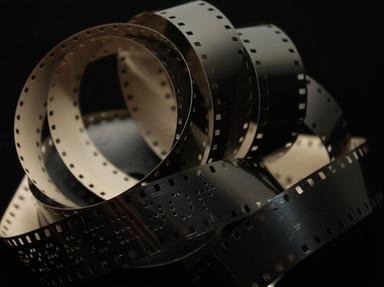Quiz Answer Key and Fun Facts
1. Mario Puzo was a respected novelist, short story writer, and magazine editor. In 1969 he published "The Godfather" that shot him to national recognition. He was called to Hollywood to work on the screenplays for all three "Godfather" films "The Godfather"(1972), "Godfather 2"(1974). and "Godfather 3"(1990). He also wrote a screenplay for what comic book superhero?
2. William Saroyan was of Armenian extraction born in Fresno, CA that became the setting for his most of his novels and plays. In 1943 Saroyan was hired to write a screenplay for MGM. When the script was deemed 'too long', Saroyan in protest was fired. In anger and rage, he reformed the script into a novel that was published just before the film's release. It was a rare occurrence when a novel is based on a screenplay at that time. What was Saroyan's novel?
3. At least eighteen films have been adapted for the screen from this author. He was cited as 'from a story' or 'additional dialogue' but his name as screenwriter appeared in only two films. Who wrote the stories of "Mildred Pierce",(1945) "The Postman Always Rings Twice"(1946) and "Double Indemnity" (1944)?
4. Dorothy Parker gained fame as a literary critic, a poet, and as a central wit of the renowned Algonquin Round Table. In the 1930s she ventured to Hollywood. While there she had two nominations for the Academy Award for screenplay. Which of these is a film to which she did NOT contribute?
5. Roald Dahl was a man of many talents. He was a World War Two fighter pilot and ace, an intelligence officer, and one of the most revered authors of children's literature. Among his written works are "Charlie and the Chocolate Factory"(published 1964), "The Fantastic Mr. Fox" (1970), and "BFG"(1982). Which of these 'spy' novels did he adapt for the screen?
6. Ray Bradbury died in 2012 leaving behind a legacy of superb fantasy and science fiction. In 1956 he was called upon to adapt what novel of a sea adventure into a screenplay?
7. If you have a world class novel to film, why not hire a world class writer? Who is the writer, who portrayed the 1920s so vividly in his novels and short stories, who was hired to bring "Gone With the Wind" (1939) to life?
8. Truman Capote was a larger than life character. Many of his short stories, novels and non-fiction books have been produced for film. During his time he wrote two screenplays not based on his own works. One was "The Innocents" (1961) based on a Henry James novel "The Turn of the Screw". The other was "Beat The Devil"(1953). Who was Capote's co-writer on that film and also the director?
9. William Faulkner was awarded the Nobel Prize for Literature in 1949, mostly for his body of work. The money he donated to establish the Faulkner Prize to encourage young writers. But Faulkner's income from his novels and short stories was never what he expected so over a decade he went to Hollywood to collaborate on screenplays. For which of these films is he NOT listed as a screenwriter?
10. When the 1957 Academy Awards were presented for best screenplay, whose name was read? (Hint: an alias)
Source: Author
Rehaberpro
This quiz was reviewed by FunTrivia editor
spanishliz before going online.
Any errors found in FunTrivia content are routinely corrected through our feedback system.

